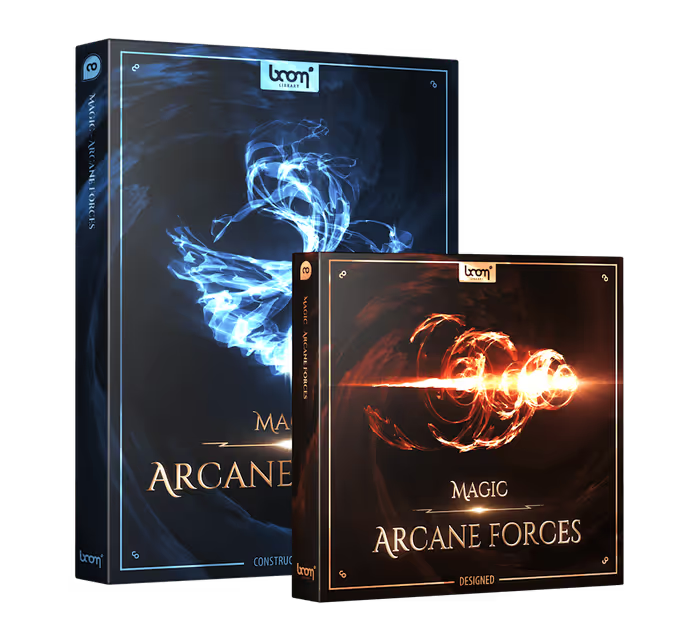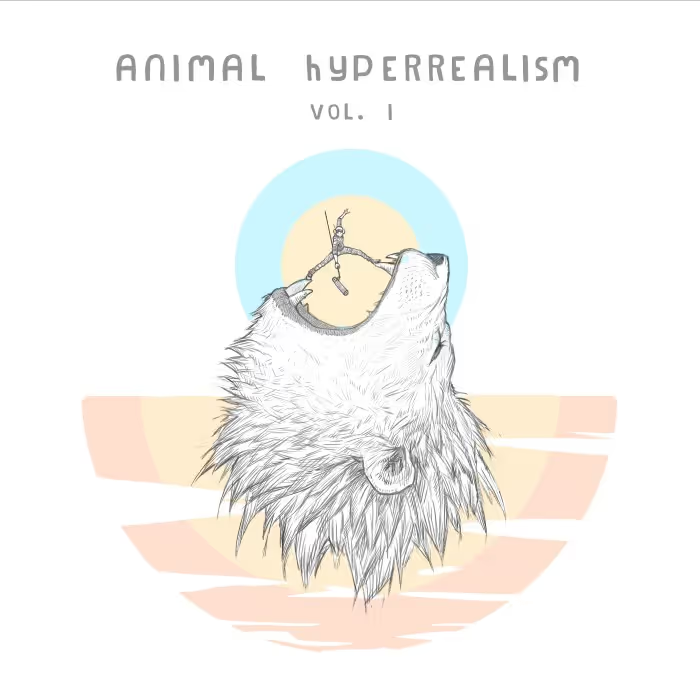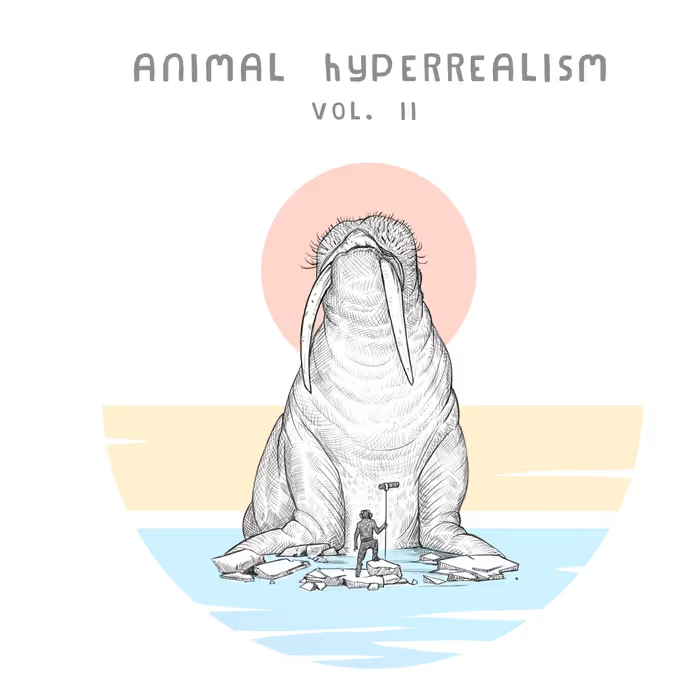Not since Super Troopers has copious amounts of maple syrup been consumed with such zeal . But as the Sweet Tooth show title insinuates, the main character Gus has a taste for the sweeter things in life.
Netflix’s adventurous and endearing post-apocalyptic drama Sweet Tooth follows the stories of several characters trying to survive the fall of civilization after a virus kills of much of the population and mutates the newest generation of babies, making them half-animal/half-human hybrids.
The sound team — led by MPSE Award-winning and 7x-Emmy nom’d supervising sound editor George Haddad at WB Sound in Burbank — was tasked with creating unique soundscapes for different character perspectives and places in the world, finding a way to delicately demonstrate the hybrids’ heightened senses using sound, and add impact to the action sequences.
Here, Haddad and 8X-Emmy nom’d sound designer Chad J. Hughes talk about world-building through sound and dive into the details of specific episodes and scenes that highlight their hard work on the show.
Sweet Tooth | Teaser Trailer | Netflix
When did you get started on Sweet Tooth and what were the showrunners’ goals for sounds initially?
George Haddad (GH): We did the Sweet Tooth pilot in 2018, I think. That went really well and they shopped it around. By the time it got picked up by Netflix, it was just before the COVID lockdown.
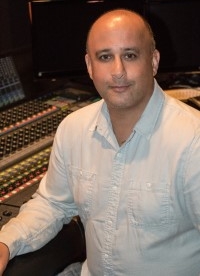
So that created an actual delay in terms of filming and then, obviously, post-production. By the time we started post-production on the series, it was about a year later, in August 2019.
That was a weird thing. Typically, you do a pilot and it’s either going to get picked up or not in the next couple of weeks. And then you jump on it a month or two later. But this one took a while because of the pandemic.
The showrunners — Jim Mickle, Beth Schwartz, and Linda Moran — were onboard from the beginning. The biggest thing for me (and I’ll let Chad jump in for the sound design) was the series has the root problem of the post-apocalyptic pandemic going on, but there were three different perspectives that we were watching the characters go through: one was with Gus and Jepperd (the main characters) out in the wilderness, one was with a married couple in the suburbs, and another was a mother and daughter in the city.
We had to be really careful not to make anything sound similar when we go from one world or one perspective to the other…
So one of the big challenges, from the pilot and into the series, was how to play those three different arcs of the story dealing with the same problem, but not have them sound the same.
We had to be really careful not to make anything sound similar when we go from one world or one perspective to the other and Chad did an excellent job of creating ambiances and sounds that made us familiar with where we were.
And the music did that as well. Composer Jeff Grace had quite a task in front of him to not make those three worlds sound the same when we’re looking at it through the character’s eyes.

Chad J. Hughes (CH): We learn later in the series that the pilot takes place in Yellowstone National Park but we don’t really know where we’re at a lot of the time initially. We’re in a forest, obviously, so it was about creating lush and dense atmospheres.
We’re in a post-apocalyptic world where there are few or no people and Gus, our main character, is being isolated by his father (we believe) in the woods.
Conversely, the city soundscape is really barren and empty, with the occasional distant military vehicle or animal being spotted. So we immediately establish that juxtaposition and lack of sound combined with tonal elements, winds, and sparse nature, giving the city it’s sense of emptiness but in a way bringing it to life. It’s not exactly a typical approach to cityscapes but given the events that have occurred with the virus outbreak and comparing it to what’s happening in Gus’s world, it really makes it play interestingly and sells his isolation in his “happy place.”
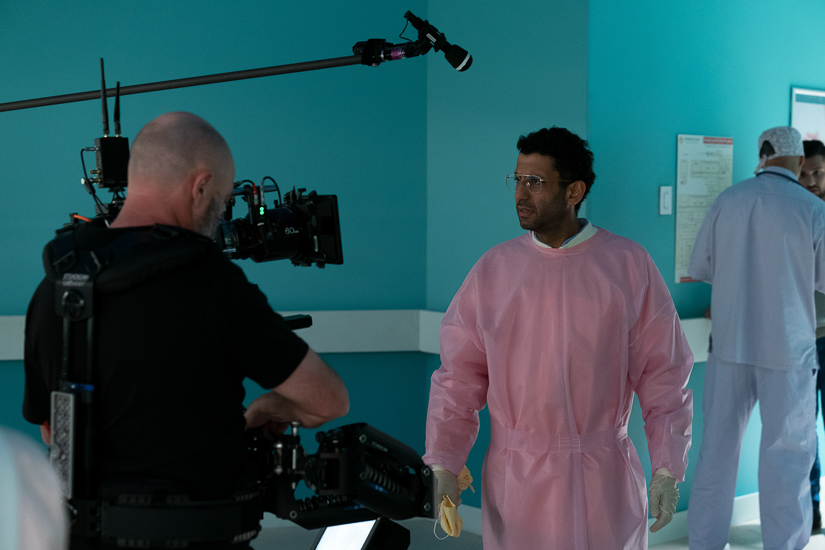
The first episode is where you’re setting up this story and trying to convey the chaos of ‘The Great Crumble.’ Can you talk about some of the key aspects of your sound work here?
Also, the music and effects worked so beautifully together, particularly during the hospital scene near the beginning. Can you talk about your collaboration with the composer and your approach to the mix?
GH: It was a lot of layers. Like you said, we had to basically get the audience aware of the characters going through the pandemic and not being successful (as we later learned in the series), which brings them to the post-apocalyptic world.
We threw a lot of sounds at the mixers. Re-recording mixers Brad Sherman and Aleksandr Gruzdev did a great job with that.
Before we hit the mix stage, we started sending sounds to the composer. That way music and effects aren’t clashing. I try to do that on any show that I’m working on. It’ll save time on the mix stage because the mixers can focus on the sounds they have, as opposed to where to carve out holes.
Before we hit the mix stage, we started sending sounds to the composer. That way music and effects aren’t clashing.
Sweet Tooth is not a typical television series so we had a bit more time than normal, but obviously we always want more time. We still had a deadline to meet so that kind of approach in the editorial phase definitely helped a lot.
Chad can talk about his amazing sound design for inside the hospital, going back and forth during the chaos.
CH: I think a lot of it was perspective-driven and I give credit to the producers, directors, and picture editors on that. It was fun to be able to sit down and paint the audio picture.
In this case, we start off in a very chaotic scene, and by the time we’re walking down this hallway and discovering that these children are being born with animal-like qualities, it’s like, “Okay, we’re not in Kansas anymore.” In contrast to the opening, it’s very quiet in this scene.
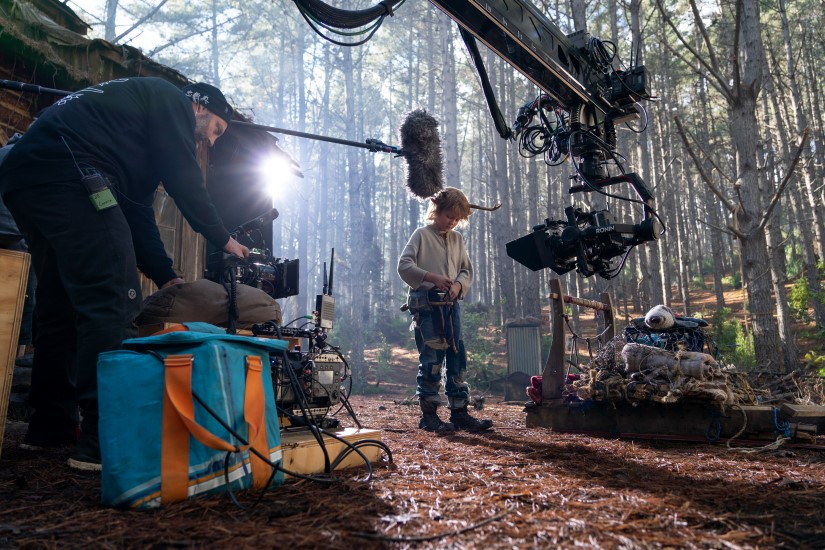
We then transitioned into these beautiful forest soundscapes — a stark contrast to the chaos of the opening scene. I think it’s interesting that we’re learning about this little boy; the story almost takes on a fable-like theme as Gus is learning certain things that his father’s teaching him in the forest about basic aspects of life. Nature played a huge role in his daily lessons from his father.
In that first episode, we’re learning through Gus’s eyes. What is the world? What does the world sound like? He has this ability to hear like a deer and he has this greater-than-human ability with all of his senses to pick up things that non-hybrid humans can’t.
The use of high frequency and wide feeling elements of sound design helped to bring in a sense of hyper-realism that Gus hears in his head.
At one point, Gus walks toward the edge of the forest boundary and it becomes this scary experience. We go into Gus’s hypersensitive hearing with some sound design elements and introduce things humans would normally hear in a quiet situation. The use of high frequency and wide feeling elements of sound design helped to bring in a sense of hyper-realism that Gus hears in his head.
That design element carries throughout the series. Whenever Gus is sensing danger or he’s hearing things from afar, we re-introduced those sound design elements, telling the audience that he’s hearing something that perhaps no one else is hearing. So there are reoccurring themes throughout the show like that, but in the pilot specifically, that was one that I can think of.
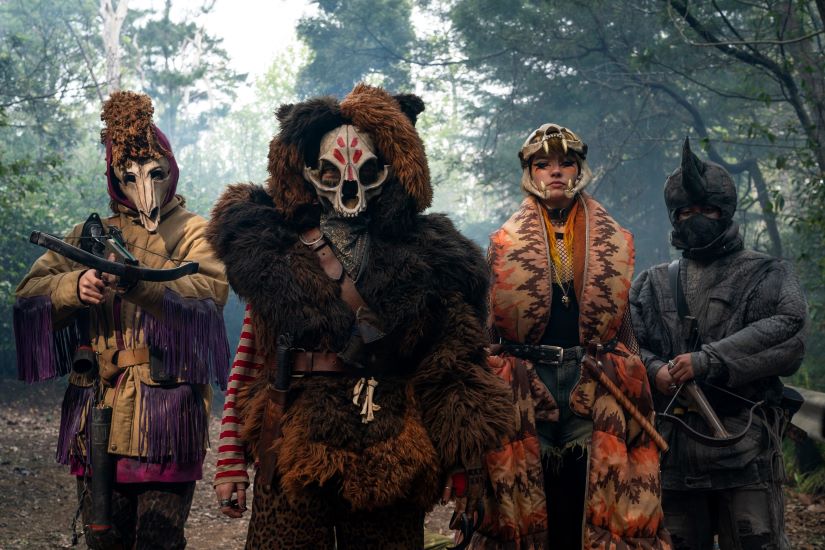
You talk about painting an audio picture. And Ep. 3 “Weird Deer Sh*t” is a great example of that. There’s that scene near the end, where Gus and Jepperd are taken captive and led through the woods, but then their party is attacked by Bear and her Animal Army. Most of that attack is actually unseen and told through sound. Can you talk about your design for the scene and your use of the surround field to create this attack?
CH: There were, of course, real elements brought into that scene like gunshots, knives, and combat. Also, there are creature design elements when the attack occurs. I tried to give Bear and her gang a mysterious and dangerous feel since we really didn’t know who they were and their appearance was threatening and scary.
When we first see the attack, I did introduce some animal design elements with each strike, changing, layering, and processing them to make something that’s not too literal. The intention for Bear’s attack specifically was to make it sound like a Bear mauling a human. There was a lot of gore added to her claw-swipe strike, and roaring and snarling in between impacts.
The intention for Bear’s attack specifically was to make it sound like a Bear mauling a human.
There were a variety of tools used in that scene, specifically samplers, and pitch/formant modification. One sampler I used is called Radium by Soundminer. I’ll pull in animal recordings just to bend and twist the audio and experiment. I tend to have a processing chain set up. I use a lot of plugins in my chains: one was Crystallizer by Soundtoys, another was Pitch Monster by Devious Machines. That can introduce really interesting character. It can take the pitch and spread it across a time spectrum allowing you to quickly perform granular pitch modification and formant adjustment in real-time. So using some of these processes, what I ended up with was this big, round sound that came from a bear but had other creatures feathered in with it without sounding too literal.
I think going bigger-than-life in those moments is important — going for a very feature-like sound design impact when the combat begins and carrying that throughout the attack. I tend to go over the top and I think in that scene we pretty much hit the mark.
George can speak to how it was mixed and what went in the surrounds.
GH: This show is a 5.1 mix. We were hoping for Dolby Atmos, but maybe next time.
What Chad delivered, he knocked it out of the park as usual, and we were so close already with his tracks alone, with the panning and processing. On the stage, Brad [Sherman] actually turned the picture off since Gus and Jepperd were blindfolded; they were just hearing this attack. He started mixing Chad’s tracks and adding movement, whether it was left to surround left or across the front, and so on.
On the stage, Brad [Sherman] actually turned the picture off since Gus and Jepperd were blindfolded; they were just hearing this attack.
He played the same perspective as the actors on the screen and then once we put picture back on, it was just a matter of tweaking a few things. With the music in as well, the whole scene sounded great on the stage. That was definitely one of the most fun scenes we had to mix.
The producers love theatrical sound. They’re not new to sound at all from their past work so they were having a ball with this one too.
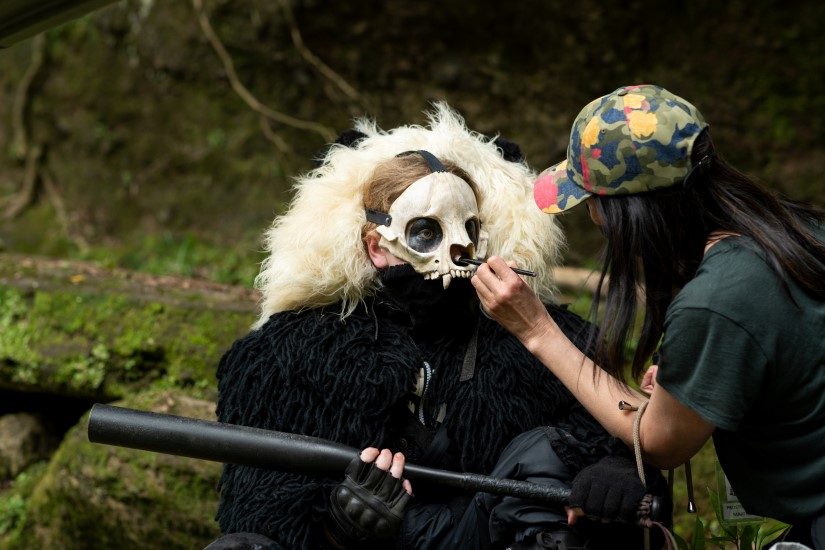
I love how you built the sound of the attack so big and then when the attackers reveal themselves, it was just a bunch of kids…
GH: We don’t know what’s going on, who’s attacking, so we took advantage of that opportunity.
Then in Ep. 4, when we actually see that scene again from a different perspective, it still played great to me, without us exaggerating what we’re about to see.
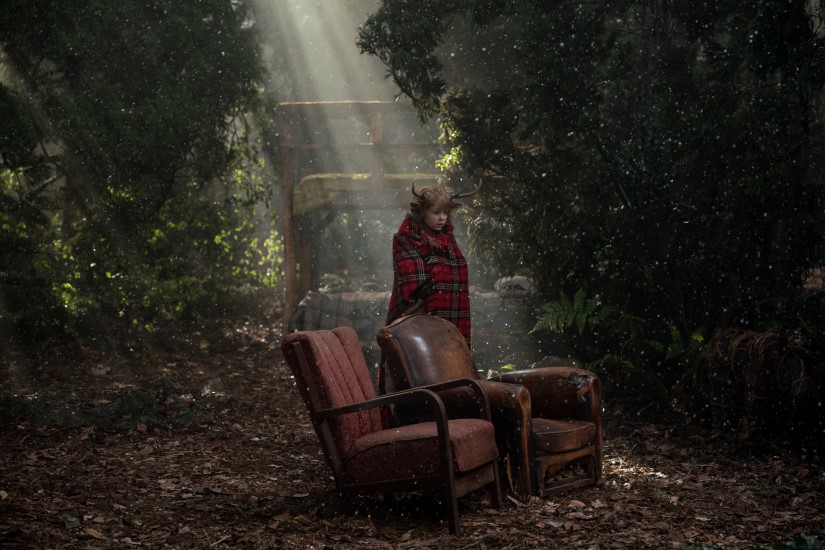
In Ep. 5 “What’s in the Freezer,” there’s a scene where Gus falls from the rope bridge and loses consciousness. Gus wakes up in a dream and he chases after Dog (his stuffed animal that has come to life). They go into the woods and the soundscape is just so great and also unsettling at times; we don’t know what will happen to Gus. There are whispery voices everywhere and other cool elements. Can you talk about your design on that sequence?
CH: That was a little challenging in that we’re taking a show where I’ve been cutting real sounds and now we’re in this ethereal world.
It was a lot of processing — taking interesting elements that we would normally hear and bringing back a reflective memory of it in the sense of sound, but changing it.
There were a variety of elements processed to create that ethereal feeling, including whispers and whales. There were simple things unprocessed that were used as well, like grass blowing and gentle winds, giving us a sense of this safe place where Gus was at while he was knocked out.
There were a variety of elements processed to create that ethereal feeling, including whispers and whales.
There was a scene when the General appeared in a mirror in the forest. I remember using some creature design elements to heighten Gus’s fear while being chased out of the forest.
There were badgers pitched down, leopards, and I brought back the bears and processed that. I was building these characters that are serving their purpose, which in that case was very threatening. The General had fiery eyes coming through the mirror and the mirror began cracking. I used some really interesting, textural elements for the glass cracking that told the story well, and I just followed that. I think the theme of that scene was just one of being obtuse — this stuff is not real.
GH: For the whispers, some of that was Chad’s sound design; some was loop group. We wanted to make it unintelligible. We didn’t use any pre-written phrases — just adlibbed — and we processed those.
We ended up using a lot of whale calls. There’s something amazing you can do with whale voices or calls.
We ended up using a lot of whale calls. There’s something amazing you can do with whale voices or calls. You can just process them, pitch them. They can be sci-fi. They can be tinnitus sounds. Anything. It blended in nicely with all the whispering sounds.
Then we were able to move those sounds around in the surround field on the mix stage.
Again, it goes back to Gus, who has no idea what the world sounds like. He was raised in the wilderness by one person, with no outside connection. So any opportunities like that, that we had with Gus, it was just a free-for-all. As Chad was saying earlier, we were able to play with the processing on those sounds.
But the elements all started off organic. We didn’t just come up with made-up sounds because we were bringing Gus into the world slowly but surely.
[tweet_box]Sweet Tooth: Playing with Sonic Perspectives for Netflix’s Post-Pandemic Series[/tweet_box]
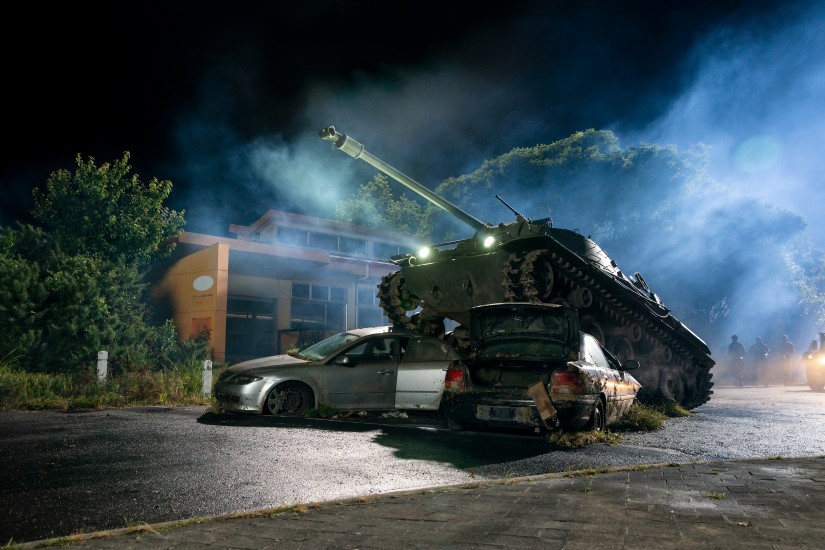
You didn’t get to mix in Atmos, but you still took great advantage of the surround field. For instance, in Ep. 8, we have Amy and the kids from the zoo in the sewer tunnels as the militia is moving in to take over the zoo. You have that perspective of the militiamen on the street above the kids in the tunnels.
Also, I really like the different PA systems that they’re using — the militia has its PA system and Amy has hers.
Can you talk about some of your sound work on that scene?
CH: A lot of that was practical effects. Although, again, we were approaching it from the bigger-than-life feature perspective, like, “Here comes the army.” There were rumbling elements, marching, tanks, and military vehicles all cut and mixed for perspective. I think what helped make that scene interesting was perspective. The track layout probably lent a hand in helping our mixers bring that all to life. I always try to set them up for success on the stage.
There were rumbling elements, marching, tanks, and military vehicles all cut and mixed for perspective.
This would be a good opportunity to maybe talk about layout because when we have a tank rolling down the street as it passes us, and then we cut to a perspective that’s in a sewer, obviously that tank sound is going to change dramatically. I’m cutting with around 256 voices, including my backgrounds, which allows me to organize the effects tracks for fast and easy processing on the stage.
That episode was particularly challenging because of the pure volume of content that needed to be cut for perspective. Organizing the tracks in such a way that the mixers could easily filter things and reverb them for perspective, I thought was very important. I spent a lot of time doing that — as we always do — but in this particular episode, it was challenging because we cut back and forth between the sewer and above ground a lot. It was the same for the PA for when we’re outside or inside the animal sanctuary.
I tried to pick elements that were mid-frequency/high-frequency and percussive sort of elements. A lot of times rumbling doesn’t really read and you just get a mushy bottom-end to the whole thing. In this case, I chose a tank that had treads that sounded very percussive and sweetened each one. I did my own pre-processing and filtering to make sure that when we cut to below ground we had complementary elements to that and that it could still be discerned as a tank or discerned as army footsteps, but had this thunderous and distant feel to it.
I did my own pre-processing and filtering to make sure that when we cut to below ground we had complimentary elements…
I will often do my own processing to get the mixers in the ballpark, and then they will just take it to another level.
That was the general approach on that scene, I’m actually looking at that session right now and see that it is very wide and it has a lot going on!
GH: Chad’s tracks came to the stage really well prepared.
When we’re in the tunnel with the hybrid kids, we took our time on the mix stage to play those perspectives. I hate to say it, but we wanted to scare the kids. So we used a lot of rumble, bottom-end subwoofer effects for them hearing the tanks and the footsteps going overhead.
When we were out of the tunnel and on the street with the army, we went loud and wide as opposed to scary and subwoofer-heavy. The producers loved hearing the perspectives.
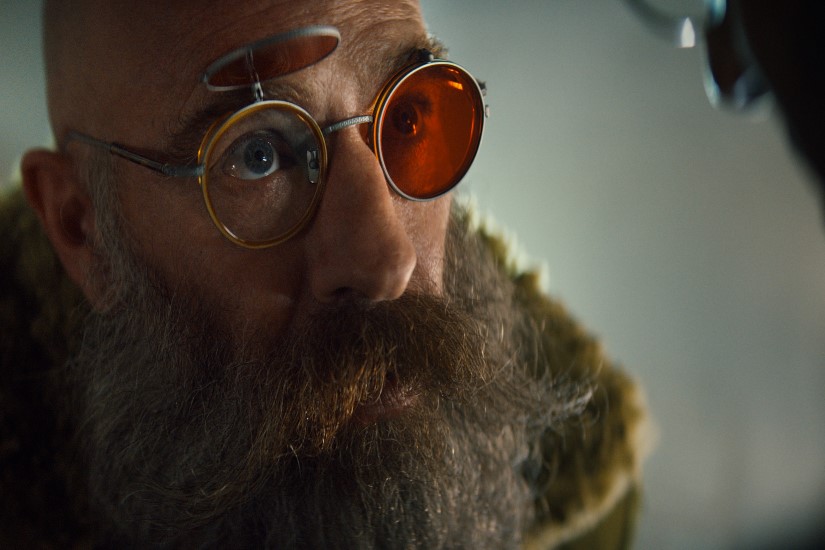
As far as the vocal battle between the General and Amy — their conversation over the intercoms — we put a lot of thought into that, too. The General was this overconfident, cocky man who has more soldiers than he needs to take over this one woman and her little compound. So we made his intercom sound wide and echo-y, and we made his voice travel all over the place to show his overconfidence.
Whereas Amy, on the inside, she had a plan. She knew she was about to blow this place up. For her voice over the PA, we didn’t necessarily make her sound grand because she was so confident. We almost brought the stereo-width tracks into mono, so they’re right in the General’s face. Whether people notice that or not, who knows? But we knew that difference.
There’s a definite contrast between the General’s wide, big, and loud PA sound versus Amy’s more confident, right to his face sound. It was a lot of fun coming up with that effect for the two intercoms.
 Tesla Model X 2015 electric full size crossover SUV sport utility vehicleKrampfstadt Studio65,00 $32,00 $51% OFF
Tesla Model X 2015 electric full size crossover SUV sport utility vehicleKrampfstadt Studio65,00 $32,00 $51% OFF
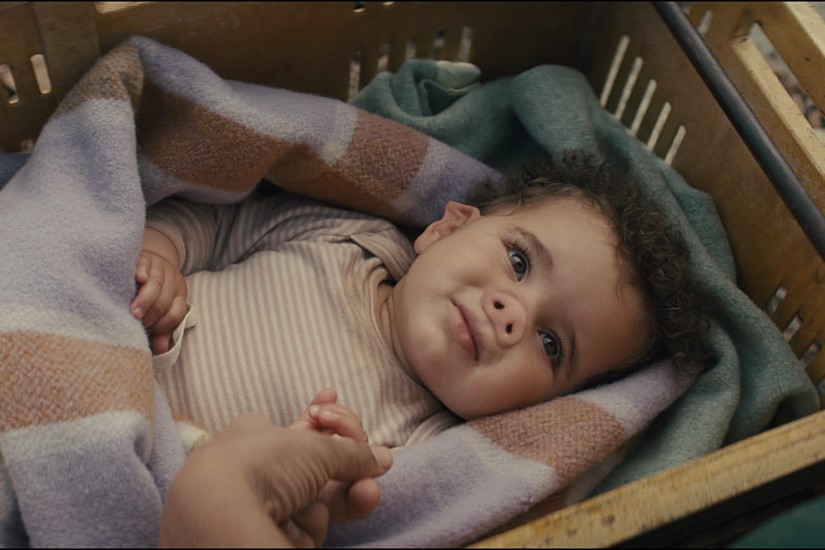
What was your biggest challenge in terms of sound design on the show and how did you handle it?
CH: One of the challenges is the believability of these kids being animals from a sound perspective. Visually we get it, but there weren’t a lot of cases where we had a hybrid vocalizing in a creature-like way. I think subtlety was the key, as well as picking our moments. In the pilot, when we’re in the nursery, I gave George a lot of material to pick and choose from. There were a wide variety of baby creatures that I designed to weave in with the normal baby coos and the various sounds they were making.
…there weren’t a lot of cases where we had a hybrid vocalizing in a creature-like way.
But if you listen to the mix, we actually chose to use very little of that. The visuals sort of told the story in those cases. We had some obvious abnormalities, visually, with these babies.
But that theme reoccurred throughout, and I would have loved to design more toward that thread of, “Hey, these are creatures and let’s assign them some sounds.”
That was challenging in that we wanted that believability from a sound perspective, but I wasn’t given a lot of opportunity for that just simply because of the way the story was being told. So personally, it was challenging for me as a sound guy. I really wanted to dive deep into that.
Toward the end of the series, we did have a few instances where I was able to do some cool creature design with some of the kids.
But overall, the general approach with the show and the biggest challenge was the amount of content and the amount of layers and getting all that to the stage in a timely manner.
Then I’m sure from their perspective, the challenge was managing a ton of assets showing up at the stage from me, on top of everything else. It was a challenging story to tell.
The hybrids throughout the eight episodes for Season 1 were definitely the biggest challenge.
GH: Thankfully our producers and Netflix love sound. And we definitely had a good amount of time to mix all these tracks that Chad delivered, and dialogue, and loop group, and music.
The hybrids throughout the eight episodes for Season 1 were definitely the biggest challenge. We had the background hybrids that have to be present, half-human/half-animals, so it was a lot of tracks. We had the creatures or critters sounds that Chad gave us for all these hybrids, but we also recorded humans making these sounds too, and we blended them. It took a while for me to blend them all together, picking and choosing which ones to use for whichever hybrid we’re seeing on-screen — using the beginning of a creature going into the ending of the human recording.
It took a while for me to blend them all together, picking and choosing which ones to use for whichever hybrid we’re seeing on-screen…
Bobby is actually one character that’s more animal than human and actually speaks in a few episodes. So we recorded two actresses for every episode Bobby was in — one actress is a little older than the other. We did that on purpose because we wanted to give Bobby a sometimes cute-sounding voice. And other times, when Bobby was angry or concerned, we had the older actress give us some sounds, whether it was actual dialogue or grunts or animal sounds. That, again, was just track after track of blending, picking and choosing, and processing as well.
I used a plugin from Flux called IRCAM Trax V3. You can play around with the gender of the voice and we didn’t want to know Bobby’s gender. So it was a lot of fun, but we’re talking dozens and dozens of tracks just for four or five seconds of screen time for that character.
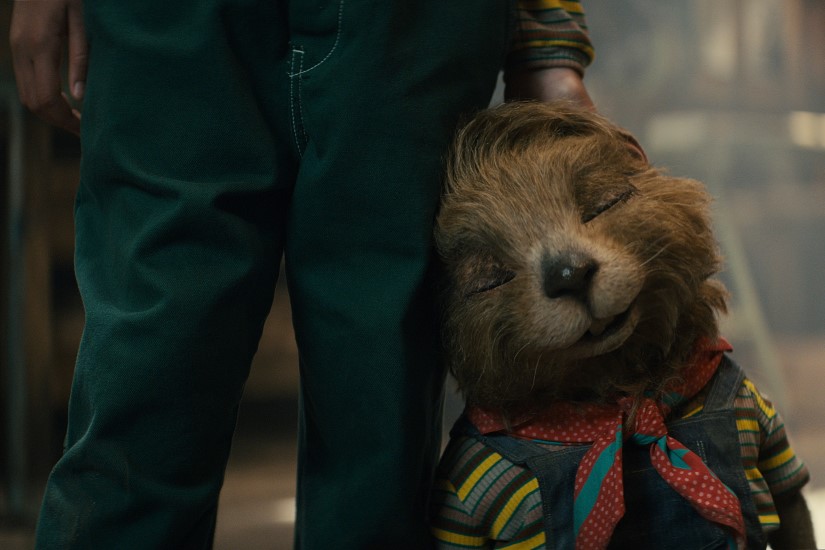
In terms of sound, what are you most proud of on Sweet Tooth?
GH: All of it! I loved the final mix. I just love the way the landscapes sound. And when there was danger, I thought we brought it up a notch and got us away from the beautiful ambiances that were playing,
Jeff Grace, the composer, knocked it out of the park.
The producers were so great to work with. As I said, they love sound. We had a great time mixing this show. It didn’t happen the way we wanted it to, because of the pandemic rules, but everybody involved just made doing sound for the series probably the most fun I’ve ever had on any show.
It’s just a very dense and feature-like quality of sound that we brought to a television show, which is tough to do.
CH: I can echo that. For me, it’s always a pleasure to hear it on the air and how it translates because I often don’t get to go to the stage. And because of the pandemic, I didn’t get to go at all. But it sort of tells me how good of a job I did because I can hear what’s playing and what’s not.
In this case, it was so full and the mixers did such a good job of bringing it all together. I couldn’t be more pleased. It’s just a very dense and feature-like quality of sound that we brought to a television show, which is tough to do. Fortunately, the time was there, the budget was there, and it was a fantastic show to work on. I hope we get the opportunity to work on it again.
A big thanks to George Haddad and Chad J. Hughes for giving us a behind-the-scenes look at the sound of Sweet Tooth and to Jennifer Walden for the interview!
 Tesla Model X 2015 electric full size crossover SUV sport utility vehicleKrampfstadt Studio65,00 $32,00 $51% OFF
Tesla Model X 2015 electric full size crossover SUV sport utility vehicleKrampfstadt Studio65,00 $32,00 $51% OFF




